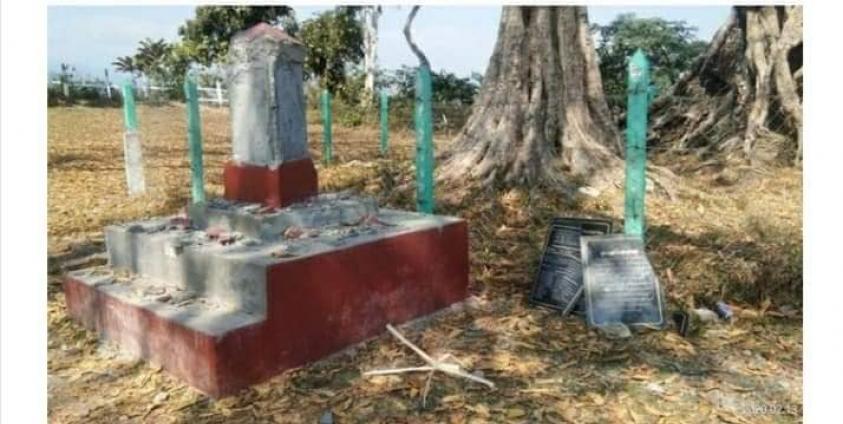In a move that has upset the local Chin community, the Sagaing regional government ordered a stone monument explaining the significance of an ancient banyan tree in Tamu Township be demolished on February 13.
The monument was located in Kham Pert town, next to the banyan tree believed to be hundreds of years old. It bore an inscription in the Lushine Chin language as well as English and Burmese, describing the community’s ancestral journey from northwestern China and northeastern Tibet to the area in 800 CE. According to local historians, the Lushine Chin people planted the banyan tree in Kham Pert before continuing to head westward into the Chin hills 400 years later.
As they embarked on their journey, it is said that the Lushine Chin promised to meet again when the branches of the banyan tree touched the ground.
The stone monument that has now been removed was erected on November 22, 2019 with members of the regional government and parliament present.
According to Pu B.H. Khuma, the chair of the Kham Pert Banyan Tree Conservation Committee, a General Administration Department (GAD) officer for Kham Pert contacted him on February 11 to say that the Sagaing government had ordered the Tamu District GAD to remove the stone pillar after receiving complaints about its presence from other locals.
“We accepted the government’s order to remove it because we didn’t want any disputes,” Pu B.H. Khuma told Khonumthung News.
Some 128 people from Kham Pert’s Ward 5 sent a complaint letter about the monument to the regional government last month. The signatories to the letter were ethnic Bamar—the majority group in Burma—and said in the letter that they objected to the attribution to the Lushine Chin sub-group, stating that around the same time as the tree was planted, Bamar, Shan and Manipuri peoples also settled in the area.
“Ethnic Bamar people sent the complaint letter, and then district-level officials investigated it. I think they were worried about inter-ethnic conflict, so the officials decided to remove the obelisk,” Lal Thawng Thang, the Chin affairs minister for Sagaing Region, said.
However, Pu B.H. Khuma, of the banyan tree conservation committee, said that the order to remove the monument shows a lack of respect for Chin history.
“We were just conserving the banyan tree that was planted by our ancestors. According to the law, all ethnic groups can protect the heritage of their ancestors,” he explained. “We didn’t commit any wrongdoing. Demolishing the stone pillar means they don’t respect other ethnic people and don’t pay attention to other ethnic groups’ values.”
Pu B.H. Khuma said that if they are barred from rebuilding their monument, the committee and community would brainstorm a response.
Chin people from India’s Mizoram State frequently come to pay respect to the banyan tree as evidence of their ancestors’ journey. Ethnic Chin ministers from Mizoram and other Indian officials have made official requests to the Burmese government to preserve and protect the banyan tree in Kham Pert as a part of the region’s history.







